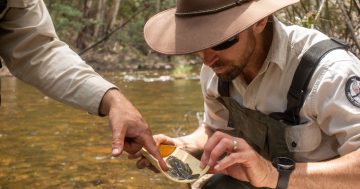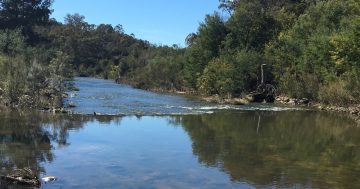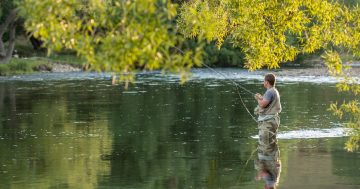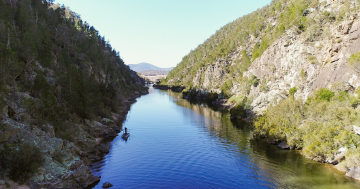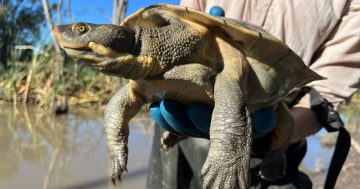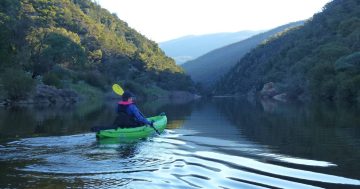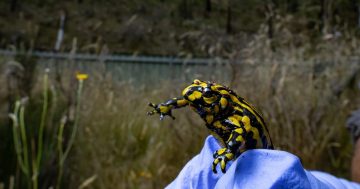Cotter Dam is at the forefront of a long and fruitful fish management program. Photo: Icon Water.
The key to protecting endangered species, in the long term, is always about protecting habitat. One endangered species, the Macquarie perch has been at the forefront of a long and fruitful fish management program.
The program has seen protection zones built through a 7km rock wall beneath the waterline to protect the fish from predators, the creation of fish ladders and in-stream obstacles cleared to help fish access spawning sites, and aid population growth.
The program continues to measure and monitor fish movement and populations to demonstrate successful reproduction rates and a thriving population. All, while building the Cotter Dam wall and extending the reservoir in the wake of the Millennium Drought to enhance Canberra’s water security.
With all the rain of late, the good news is that Canberra’s dams are all full to the brim. But all that inflow has produced a mystery of sorts. Catchments are becoming less predictable as climate volatility is creating new challenges to ensure quality as well as quantity of water.
Icon Water’s head of Catchment Protection and Land Management, Tim Chaseling and his team, have been conducting tests and investigating how Canberra and Queanbeyan reservoirs are behaving.
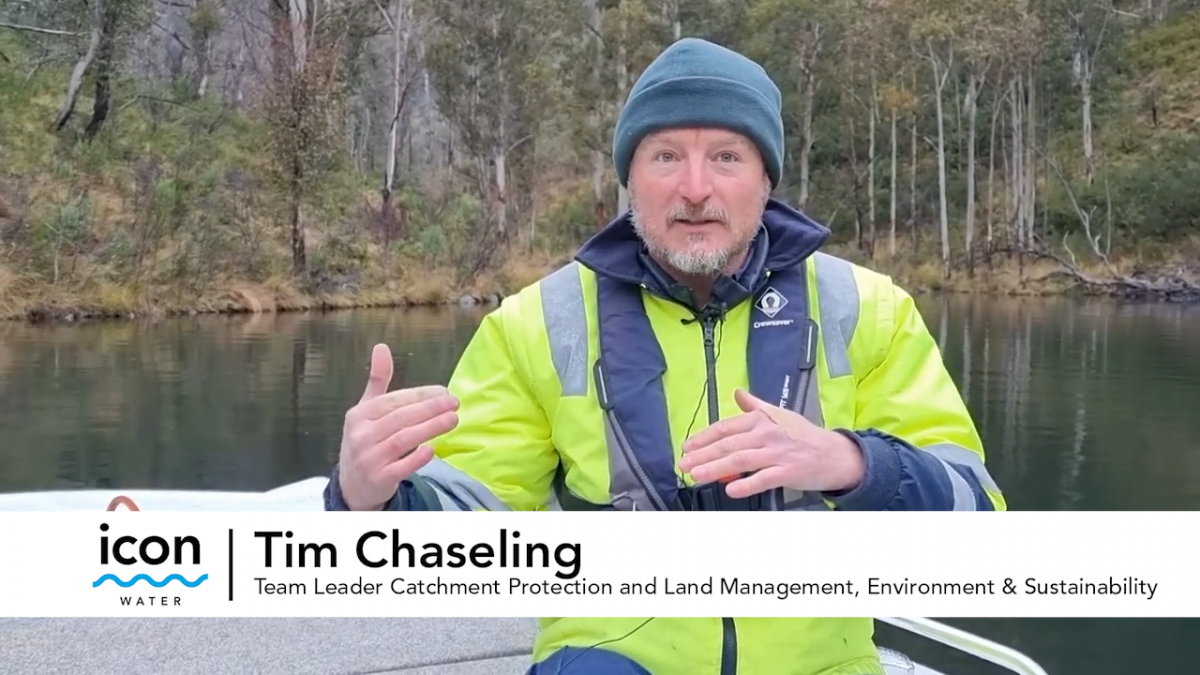
Icon Water’s head of Catchment Protection and Land Management Tim Chaseling. Photo: Icon Water.
“The mystery around why our catchments are behaving differently is not one we’ll solve like a Murder She Wrote episode,” Tim says. “We’re not going to lift up an old log and go ‘oh, so that’s why’.
“We’ve had the intense fires, a very dry drought and then three back-to-back La Nina years – that’s something that maybe hasn’t happened in sequence ever, certainly not since the dams were built.
“What we do know is that the measurements of rainfall in the area and the impact it has on our reservoirs are not matching up in the usual way. So, Icon Water is putting in extra efforts to monitor and protect our catchments to maintain the high quality of Canberra’s water.”
A regular catchment health assessment of the Cotter Reservoir was conducted by the environment team in April and the findings were positive.
The Cotter Reservoir, one of four crucial drinking water reservoirs for Canberra and Queanbeyan, was found to be in good health overall. The reservoir’s holding good quality raw water for the Stromlo water treatment plant to process when required.
The assessment at the Cotter included a visual inspection of the catchment area, an assessment of the quality of the water protection zones around the reservoir, inspection of Icon Water’s critical infrastructure, and a general survey for all species using the reservoir (including cormorants, kangaroos and pests such as rabbits).
The team monitored the area’s rehabilitation after the 2003 bushfires, the quality and coverage of the riparian areas, and ongoing efforts to remove pine wildings and blackberry weed species were noted.
One of the key factors in the assessment was the protection of the nationally endangered Macquarie perch fish population in the catchment, including condition of various habitats and predator abundance.
The Cotter Dam cuts off migration of the invasive species of carp, as well as redfin, which have resulted in Macquarie perch being critically endangered elsewhere. Behind the wall is the last refuge, carefully managed by a collaboration between Icon Water, National Parks and the University of Canberra.
The Icon Water team highlighted the importance of continued monitoring and assessment of the catchment area and achieving the balance between delivering high-quality drinking water and protecting native fish species. Regular assessments are necessary to identify any potential risks and ensure the water supply is safe for consumption.
Overall, the assessment conducted by the environment team provided assurance the Cotter Reservoir is in good health and measures to protect the catchment area are working effectively.
The team’s efforts to monitor and protect the area are vital in maintaining the safety of the drinking water supply and preserving the ecological balance of the catchment.
“I think our goal is to get out ahead of these changes we’re seeing, so ideally Canberran’s don’t notice at all,” Tim says. “There are big challenges that climate is throwing our way when it comes to water in Australia’s biggest inland city.
“But we’re also lucky to have been proactive in the past, over many decades, and if we keep staying a step ahead, we can better adapt to meet these challenges.
“One quite unusual and great feature of our catchment is that it has effectively cordoned off a section of the river and kept some invasive species, like carp and redfin out. As a result, this is now the only safe habitat left for Macquarie perch.”
Read more in Icon Water’s publication “Balancing water security and environmental biodiversity – A win-win for regional water supply and fish conservation” released on World Environment Day, 5 June 2023.












